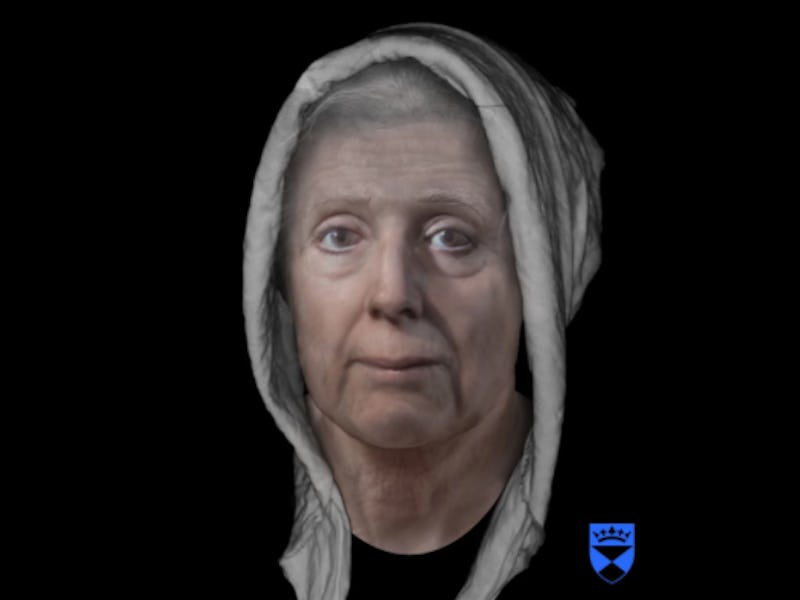Face of Scottish "Witch" from 1704 Reconstructed with 3D Virtual Sculpture
The face of "evil" is not actually that scary.

In 1704, Lilias Adie was sentenced to be burned at the stake for “confessing” to witchcraft and having sex with the devil. Instead, she died in her cell — possibly from suicide — before her punishment could be carried out. Now, technology has allowed us to see the common face of a woman accused of witchcraft centuries ago.
Her remains were buried under a huge stone by locals on Scotland’s Fife coast, presumably believing the heavy object might stop Adie from rising from the grave.
A hundred years later, her remains were uncovered by antiquarians, and on Tuesday, what we think her face might have looked like — thanks to forensic facial reconstruction technology used by researchers at the University of Dundee in Scotland — was revealed.
And — of course — it’s actually a face that resembles the average older woman than the scheming servant of satan, prompting even more empathy for the numerous women who were mercilessly persecuted by fearful, religious zealots in the 18th century.
“There was nothing in Lilias’ story that suggested to me that nowadays she would be considered as anything other than a victim of horrible circumstances,” Christopher Rynn, from Dundee University’s Centre for Anatomy and Human Identification, told the BBC.
A facial reconstruction of Lilias Adie shows an older woman with kindly, big eyes.
Rynn was the forensic artist responsible for Adie’s visual recreation.
A program on BBC Radio Scotland called Time Travels employed Rynn to recreate the face of an accused witch using the rare artifacts of an actual skull; most “witches” were burned, thus leaving no remains.
While Adie’s skull disappeared from St. Andrews University Museum in the 20th century, photos of the skull were enough for Rynn to recreate Adie’s likeness digitally, using forensic reconstruction methods and 3D virtual sculpting.
Lilias Adie's skull as it was photographed before it went missing.
Accused witches were generally burned at the stake because it was believed that the devil had the power to reanimate corpses and use the dead to inflict harm upon the living.
Adie was apparently tortured while in prison to give up the names of other witches. “But Lilias said that she couldn’t give the names of other women at the witches’ gatherings as they were masked like gentlewomen,” historian Louise Yeoman told the BBC. “She only gave names which were already known and kept up coming up with good reasons for not identifying other women for this horrendous treatment.”